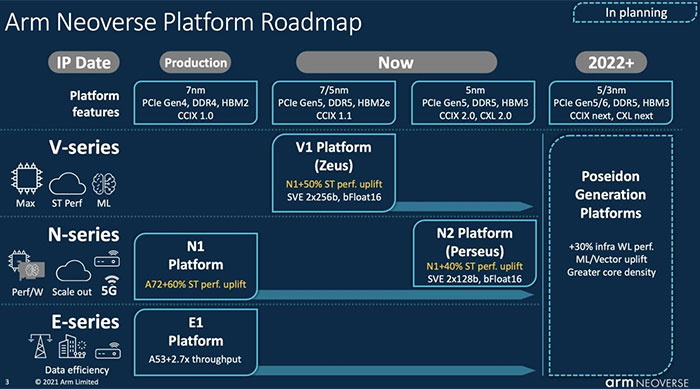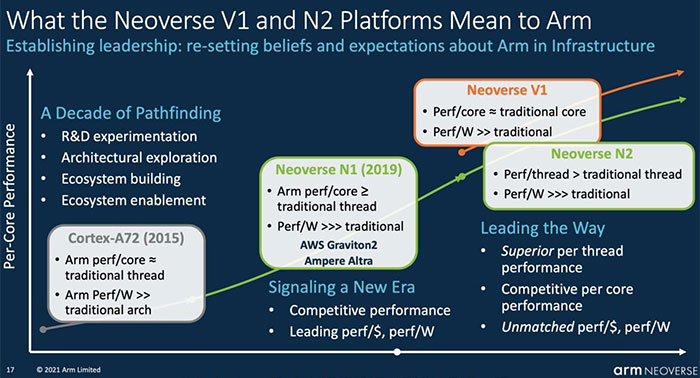Chip designer Arm has outlined a pair of new products which will be important in deepening its penetration into the data centre market. The firm added the new Neoverse N2 and Neoverse V1 platforms to its roadmap last September, and yesterday it fleshed out the new features and the main selling points of the new platforms in a special presentation.

As you might expect, the Neoverse N2 and Neoverse V1 platforms take different approaches to data centre computing, broadly forking to cover the two most important application areas for such processors.

Arm's Neoverse N2 is the first of its data centre processors to use the new Armv9 architecture. The highlight is that the N2 offers 40 per cent higher 1T performance (compared with the N1) at the same power/efficiency levels. Arm forecasts the Neoverse N2 being popular in edge applications to the cloud.

The Arm Neoverse V1 is the bigger change, the longer evolutionary step from the N1, hence the new 'V' product branch. The biggest change is the creation of a wide and deep architecture with the addition of scalable vector extensions (SVE). Arm says the V1 delivers "a massive 50 per cent uplift, 1.8x improvement for a range of vector workloads and 4x improvement for machine learning workloads over N1". This 'revolutionary' chip will be targeting HPC and and exascale computing server markets.

Arm couldn't release 'platforms' without a system IP so has also introduced (Coherent Mesh Network) CMN-700, which it described as "a key element for constructing high-performance Neoverse V1 and Neoverse N2-based SoCs". From the diagram you can see that CMN-700 enables next-generation use cases for multi-chip, memory expansions and accelerators. It supports up to 4x the number of cores as its predecessor (256 cores per socket), chiplet architectures, plus heterogeneous chiplet designs.













